Molasses for soil improvement and nematode management
Found an interesting pdf-file from Haiwaii Agriculture Research Center, with field study on the role of molasses in soil improvement and nematode management, see link below:
Here is a link that might be useful: Role of molasses in soil and nematode control
Comments (23)
floridadon
10 years agolast modified: 9 years agoAn interesting study. I could not find the rate of application used in the various studies. They show diluitions, but not a rate per unit area.
strawchicago z5
Original Author10 years agolast modified: 9 years agoI tested to see if molasses is effective as fertilizer for pots ... so far I see it's more effective in deepening bloom color. The disadvantage of molasses is it attracts leaf-cutter worms, due to the higher sugar content of the soil. Higher sugar also feeds the fungi, more black spots.
Roses like Double-Delight and Jude the Obscure like the molasses. Others like Sharifa Asma and Eglantyne, both have Rugosa heritage, don't care for molasses nor chemical fertilizers.
Plantation-brand molasses sold for $5 at Health Food store has 17% potassium, 20% calcium, and 20% iron. But some roses don't care for such high iron, and get brown spots on leaves, like the time I tested Iron sulfate on my azaleas. I get better result just using gypsum (calcium sulfate), and sulfate of potash (for potassium). Both calcium and potassium gave the best root-growth in hydroponic experiments.
Below is a rose that I grow from a tiny seed, 7 months old. It's planted in MiracleGro Moisture Control potting (has slow-released fertilizer). I mixed 1/2 cup of Jobes Organics for tomatoes NPK 2-7-4, with bone meal and beneficial microbes. I also mixed gypsum and a tiny bit of sulfate of potash in the pot for best root growth.
This post was edited by Strawberryhill on Tue, Oct 22, 13 at 17:59
Related Professionals
Reading Landscape Architects & Landscape Designers · Clark Landscape Architects & Landscape Designers · Lowell Landscape Architects & Landscape Designers · Avocado Heights Landscape Contractors · Berwyn Landscape Contractors · Brooklyn Park Landscape Contractors · Corona Landscape Contractors · Fort Hunt Landscape Contractors · Kettering Landscape Contractors · Methuen Landscape Contractors · Miller Place Landscape Contractors · New Braunfels Landscape Contractors · Placerville Landscape Contractors · Uxbridge Landscape Contractors · Vacaville Landscape Contractorsstrawchicago z5
Original Author10 years agolast modified: 9 years agoMolasses is quite effective in deepening the colors of bloom. In 1908 the Rhode Island Rose Society deepened the pink blooms by a 7% to 10% sugar solution.
This is Evelyn in hot August, after weeks of watering with 1 teaspoon molasses (plus 1 teaspoon vinegar to lower my pH 8 tap water) per 2 gallons of water:
This post was edited by Strawberryhill on Wed, Aug 28, 13 at 9:01
strawchicago z5
Original Author10 years agolast modified: 9 years agoCAUTION: Fertilizing with molasses/vinegar for my alkaline tap water resulted in more black spots. Sugar in the molasses feeds surface soil fungi, and make soil more acidic. Keeping surface dry and alkaline prevents fungal germination. I no longer add vinegar to molasses.
Last year I used vinegar to bring down my pH 8 tap water, resulting with roses wilting in high heat. Vinegar is harsh for plants, but great for killing weeds.
Only certain roses benefit from molasses, like those with a higher iron requirement. Molasses with 20% iron helped Double Delight to grow fast. The sugar in molasses feed the endo and ecto-mycorrhyza fungi, both increase the phosphorus supply to plants. Molasses is best as diluted soluble, so it can travel to the root zone.
Below is a purple bloom of Angel Face rose, color deepened with molasses and gypsum:
This post was edited by Strawberryhill on Tue, Oct 22, 13 at 18:52
strawchicago z5
Original Author10 years agolast modified: 9 years agoSonia Rykiel was a pale pink for 2 years, until I watered it with molasses & gypsum & vinegar, and got deeper pink. I get better result with molasses & gypsum & sulfate of potash, plus healthier plant.
Sonia Rykiel rose has a higher need for iron, the plant is pale and stunt in my rock-hard alkaline clay, pH 7.7. Below picture of Sonia Rykiel rose deepened with molasses & gypsum was taken in hot and dry August.
This post was edited by Strawberryhill on Tue, Oct 22, 13 at 18:11
strawchicago z5
Original Author10 years agolast modified: 9 years agoI checked the pics of my roses fertilized with sulfate of potash and soluble gypsum ... they have thicker branches, more leaves, and healthier than the ones fertilized with molasses.
Duchess de Rohan was fertilized with sulfate of potash and soluble gypsum for 1 month, then it's a decline in health when I switched to molasses and gypsum.
U. of Kentucky experiment with seedlings is right: high potassium and calcium yielded the best result. Here's Gene Boerner, 1-month growth & lots of buds, bought as gallon-size from Roses Unlimited. It's fertilized with sulfate of potash and soluble gypsum.
This post was edited by Strawberryhill on Sat, Aug 31, 13 at 16:20
strawchicago z5
Original Author10 years agolast modified: 9 years agoMolasses itself is acidic, no need to add vinegar. Here's an excerpt from the link below:
"pH levels of: Grandma’s 5.4 Folding Farms 5.4 Wholesome Organic 5.5 Brer Rabbit 5.6 Plantation Blackstrap 5.6"
Previous years which I did not fix my tap water at pH 8: pale leaves and much less blooms. This hot summer I fixed my tap with molasses and gypsum. Here's Liv Tyler rose in early September, with temp near 90 degrees.
Here is a link that might be useful: What's really in the molasses?
This post was edited by Strawberryhill on Tue, Oct 22, 13 at 18:49
bluegirl_gw
10 years agolast modified: 9 years agoThat is so interesting--I knew molasses was cane sugar but didn't know what blackstrap molasses was. I'm anxious to try it with sulfate of potash & gypsum but don't know if it's too late in the season now. Typical first freeze is second week in Nov.
Gypsum was a wonder product in my old zone of mid-coast Tx. The soils were like Houston's "black gumbo"--very sticky black clay that bakes rock-hard during the dry season. It's a nutritious soil if you can amend it's tilth & alkalinity,
The first year we lived there it was undiggable. After listening to Dewey Compton recommend gypsum we dumped a small pile every foot or so where we wanted to put in tomatoes & watered it in. It made the soil crumbly enough to plant. We continued to add grass clippings, manure, oak leaves, etc. to build up some fine workable soil, but the gypsum really helped break the soil up initially so we could get started.
I'm glad to know it has benefits in other soils, like the caliche riddled mess I'm dealing with now.
strawchicago z5
Original Author10 years agolast modified: 9 years agoHi BlueGirl: Folks recommend stop fertilizing 6 weeks before 1st frost. For late fall fertilization, University of Illinois recommended fertilize with organics right before the ground freeze, which is Thanksgiving weekend in zone 5a. We have our 1st frost here today Oct. 22, but I'll wait until the ground freeze end of Nov. to apply organics.
I have the same good results breaking up my rock hard dolomitic/limestone clay here with gypsum. I was digging a hole and stopped at rock-hard limestone at the bottom. I sprinkled gypsum, poured some water, and took a few hours break. I came back, and the bottom was softened enough to fish out more stones.
In the past I dumped peat moss (pH 4), or alfalfa meal (pH 5.7) at the bottom of the hole. BIG MISTAKE ! Those fine particles glued up with my sticky clay ... and became concrete. University of California Extension listed 1 ton of gypsum as equivalent to 5.38 ton of sulfur.
I also tested how sulfur soften my clay ... takes way longer than gypsum. It took at least one month for the sulfur to have an effect. A bit of gypsum is 5 times more effective than sulfur to soften clay, also to de-salt saline soil.
Molasses & gypsum & sulfate of potash to lower alkaline water: It works better than vinegar, I wilted a few roses by watering plus vinegar in high heat. I tried used lemons last year, didn't green up. Molasses is thick so I dilute molasses with water, before adding the other 2 powders and shake the bottle. Then I use 1 teaspoon of that pre-mixed solution per 2 gallons water. Here's the basics if used from concentrated.
One teaspoon of thick molasses per 2 gallons of water, beyond that will turn the edge of leaves brownish (I did that to Gina's rose, most likely from the 20% iron of molasses). Wholesome Organics (zero salt) and Plantation brand (low-salt) also has 15% calcium and 20% potassium.
The purpose of adding sulfate of potash and calcium sulfate (gypsum) is to utilize the sulfur part to green up roses, and neutralize the lime in tap water.
One teaspoon of gypsum powder per gallon of water, beyond that will make plants more prone to fungal diseases (rust and black spots). Too much calcium drives down potassium, necessary for disease-prevention.
One teaspoon of sulfate of potash per gallon of water, too much potassium will drive down nitrogen, and you'll get tiny leaves and less foliage.
If you use both sulfate of potash together with gypsum, then you'll get double the sulfur, since both has sulfur (at least 17%) in each substance. In that case, it would be 1/2 teaspoon of gypsum powder and 1/2 teaspoon of sulfate of potash per gallon of water.
Kelp4Less instructed to dilute the sulfate of potash powder in advance with water. I started from that as the base, and add molasses until it dissolve. Kelp4Less instruction for gypsum was 1 tablespoon per gallon of water ... that's way too much.
"Wholesome Organics" molasses already has 15% calcium, 20% potassium, and 20% iron, plus other trace elements, less is best. NPK of molasses is 3-1-5.
Folks in the container forum also wrote on how calcium and potassium promote root growth. The sugar in molasses make the soil more acidic and feed endo and ecto-mycorrhyza fungi, both thrive at pH below 7. Those fungi supply phosphorus to roots for best flowering.
I check the pH in the holes fixed with gypsum and pine bark mulch ... it's clear in red cabbage juice, near neutral. So I can put bone meal in the planting hole for best flowering. Bone meal can't be utilized if the soil is alkaline.
nanadollZ7 SWIdaho
10 years agolast modified: 9 years agoThe photos of your roses are just plain gorgeous, strawberry. Your Evelyn blooms are positively turning me green with envy. I just love those pics. Thanks for the tip about putting organics out just before the ground freezes--but I think I'm a little late already. We've have a terribly cold week with lows in the low 20s. It's going to warm up a little so maybe I can put some organics out in a few days. I usually do it in February and early March. Have you ever tried it at those later dates with good results? Glad I found you on this forum. Diane
strawchicago z5
Original Author10 years agolast modified: 9 years agoHi Diane (nanadoll): I'm glad to hear from you. I put chicken manure (chickity doo-doo, sold for $8 per 25 lbs. bag at Menards). I did that this Saturday, Nov. 23, before the night temp. dipped down to 12 degrees. The bag of compost left outside was frozen, so I had to use the bags stored in the garage (still fluffy) to top-dress over the chicken manure.
Here's a quote from U. of Illinois extension: "Roses can be fall fertilized after the plants have gone dormant. Applying fertilizer at this time will not encourage growth but will be available as the plants start to grow in the spring. Also by using a fertilizer high in potassium winter hardiness tends to be increased."
Walmart sells the same 25 lbs. bag of chicken manure for $20 (versus $8 at Menards). Lowe's sell 1 cubic feet of chicken manure for $3.18. HomeDepot sells 40 lbs bag of dry chicken manure cheap. NPK of chickity-doo-doo is 5 -3 - 2.5, with 9% calcium. The 5% nitrogen will promote growth early spring. Phosphorus movement is slow, so it's a head-start with 3% phosphorus.
I did late-fall fertilization last year, and my roses were blooming 2 weeks ahead of the rose park (their Austins are much older than mine). I plan on skipping spring fertilization, late spring growth in warm weather only invite aphids.
Here's a review from a Walmart customer on Chickity doo doo ... I also read other positive reviews from Amazon, plus it's cheap.
"I love this organic fertilizer. I grew the best organic garden last year. Crops were healthy and the fruit and vegetables were huge. Taste was absolutely phenomenal. Neighbors kept asking what I was doing different because my plants with all their fruit and vegetables were so huge and healthy. We had such a huge yield that I let the neighbors come pick as much fruit and vegetables as they wanted for canning. Highly recommend this organic fertilizer."
Here is a link that might be useful: University of Illinois on fertilizing when ground is frozen
strawchicago z5
Original Author10 years agolast modified: 9 years agoMolasses has an acidic pH, and sulfate of potash is quite acidic (23% of sulfur, compared to 17% sulfur in gypsum). A nursery once recommended making the soil more acidic by pouring a can of Coke into the soil.
Here's how to change the colors of booms from red range to blue range, from Robert Griesbach, a research plant geneticist at the ARS Floral and Nursery Plants Unit, located in Beltsville, Maryland. Here's an excerpt from the link below:
"Color-producing pigments include the following:
The first, Flavonoids, are quite common in roses. They produce red through blue colors.Carotenoids, found in sunflowers and marigolds, produce yellow and orange coloring.
Chlorophyll, the third pigment, gives plants their green color.
"By mixing and matching these three pigments," says Griesbach, "an endless array of colors can be created." His lab also discovered that you can change the color of a flower, for example, by changing the acidity level (or pH) of the flower's cells.
So, with a change in pH in the rose flower cell - interacting with the rose flower cell flavonoids - instead of being blood-red, the rose's petals will turn blue."
Jim from PA already posted how he changed Mr. Lincoln from Red to Purple by putting sugar in the vase.
Here is a link that might be useful: Research on changing flower color
dchall_san_antonio
10 years agolast modified: 9 years agoI've never posted in this forum, and I don't want to spend a lot of time introducing myself, but since 2002 I have moderated three organic lawn care forums around the Internet. I live in San Antonio and have noticed the mention of Malcolm Beck in another post by strawberryhill. That made me feel a little at home here. I have met Beck on many occasions as he had a monthly organic gardening community meeting running for a year or so in the early 2000s. Malcolm is considered the father of organic gardening in our part of Texas and has a huge following, so it is nice to see his mention in this forum.
I have an observation or two (or a lot more) on this forum, but in the context of this thread, I'd like to hold my keyboard back somewhat. All my focus has been in lawns for these years, but in the course of many meetings and keeping my ear to the ground, I have learned a little about how the community cares for roses. First of all, to answer a question asked way up on this, the application rate for molasses over an area is 1 gallon per acre which equates to 3 ounces per 1,000 square feet. For spraying roses, the San Antonio organic community typically uses 3 ounces of molasses along with 3 ounces of liquid seaweed per gallon of water. Spray the undersides of the leaves and all surfaces of the plant. What this apparently does is feed the microbes living on the outside of the plant and those microbes help ward off sucking pests. If you add 3 ounces of garlic juice to the mix, it helps keep thrips off the roses.
If you have not already discovered it, check your local farm and ranch co-op to see if they sell bulk molasses. Bulk molasses is sold by the pound. I think the current price is around $0.15 per pound which equates to about a $1.50 per gallon. This stuff is feed grade molasses, not food grade.
Also I'd like to respond to somethings strawberryhill said above. This might be long so get comfortable.
I have the same good results breaking up my rock hard dolomitic/limestone clay here with gypsum. I was digging a hole and stopped at rock-hard limestone at the bottom. I sprinkled gypsum, poured some water, and took a few hours break. I came back, and the bottom was softened enough to fish out more stones.
I would highly suggest you get a soil test done before adding anything like gypsum to your soil. The best soil test lab in the country seems to be Logan Labs in Ohio. By best I mean bang for the buck as well as reliability in their test results. For $20 you get testing done that would cost up to $100 at most university soil test facilities. At LL that is their normal test so they are very experienced to doing it. At a university these would be considered "extra" and they'd have to order chemicals and relearn how to do the test. And in general, adding gypsum type calcium to a soil that is already calcareous seems like the wrong approach.
In the past I dumped peat moss (pH 4), or alfalfa meal (pH 5.7) at the bottom of the hole. BIG MISTAKE ! Those fine particles glued up with my sticky clay ... and became concrete. University of California Extension listed 1 ton of gypsum as equivalent to 5.38 ton of sulfur.
The only thing I would put in the bottom of the hole would be micorrhizal fungi and possibly rock phosphate.
I also tested how sulfur soften my clay ... takes way longer than gypsum. It took at least one month for the sulfur to have an effect. A bit of gypsum is 5 times more effective than sulfur to soften clay, also to de-salt saline soil.
First of all I would disagree with making this sound like a blanket statement. Gypsum does not soften soil except in special circumstances. Sulfur is a fungicide which kills the beneficial fungi which normally soften soil. So sulfur would be a bad idea for softening the soil. In the lawn community there are commercial surfactants sold to soften soil for professional sports complexes and golf courses. The cost roughly $70 per gallon which is out of reach for most home owners, but not out of reach for one of the moderators I worked with for several years. He also happens to be a soap hobbyist and junior chemist. Basically he tried the various surfactant materials and found they worked fantastic. Then he reverse engineered them and examined the ingredients. Then he bought those ingredients on eBay and started experimenting. As his basic tool he uses a screwdriver. Stab the screwdriver into the ground and measure how deep it goes. Then soften the soil and measure the penetration. Then along I came and simplified his approach. I have been recommending the use of baby shampoo at the rate of 3 ounces per 1,000 square feet. Apply to the soil and immediately follow up with 1 inch of water. A week later give another inch of water. A week after that reapply the shampoo and inch of water. That should set up the soil environment to favor the beneficial fungi which normally keep the soil soft. In the typical lawn this has worked across the country. In my yard after watering my soil is almost too soft to walk on without turning an ankle. That moderator experimented with increasing amounts of his surfactant to see how deep his soil would soften. He got up to about 50 ounces of surfactant per 1,000 square feet every week for months. There was no problem to the lawn (but I would redo this for roses to be sure). As far as softness, basically he ran out of screwdriver and had to resort to other measuring devices. I believe he was at a comfortable 20 inches or so of pretty soft soil (he's north of Philly). Another mod had a tree limb bury itself 27 inches deep in his lawn. So I would highly recommend trying this.
Molasses & gypsum & sulfate of potash to lower alkaline water: It works better than vinegar, I wilted a few roses by watering plus vinegar in high heat. I tried used lemons last year, didn't green up. Molasses is thick so I dilute molasses with water, before adding the other 2 powders and shake the bottle. Then I use 1 teaspoon of that pre-mixed solution per 2 gallons water. Here's the basics if used from concentrated.
Again making the blanket statement that gypsum is good for the soil is not going to work for many people. Certainly it won't work in Texas where most of the soil is limestone with a pH of 8.0. Normally we use vinegar instead of RoundUp to kill plants. Spraying it on plants is one thing (non selective herbicide), but using it on the soil is another (carbohydrate bacteria food). And I'm also interested in the mention and use of potassium sulfate (sulfate of potash). That is not an organic material. That is salt. I realize it is used in every commercially branded organic fertilizer, but that is why I never use those. So I'm curious why it is so prominent in an organic forum and what it does to enhance rose health or production.
One teaspoon of thick molasses per 2 gallons of water, beyond that will turn the edge of leaves brownish (I did that to Gina's rose, most likely from the 20% iron of molasses). Wholesome Organics (zero salt) and Plantation brand (low-salt) also has 15% calcium and 20% potassium.
I have not heard of any problems using 3 ounces of molasses per gallon. I'll check into this further.
The purpose of adding sulfate of potash and calcium sulfate (gypsum) is to utilize the sulfur part to green up roses, and neutralize the lime in tap water.
Again this only applies to calcarious soils, but I believe there is a much better material to use. Sulfur is a fungicide surpassed only in potency by most sulfates. If you want to harden your soil, the first thing you should use to kill the beneficial fungi is sulfates. If you have calcarious soil, you'll be better off using greensand (if you can find it) and mulching with a shredded tree mulch. As the mulch decomposes the organic humic acids from that process will do more to acidify your soil than sulfur. Any tree trimmer has the material you need.
One teaspoon of gypsum powder per gallon of water, beyond that will make plants more prone to fungal diseases (rust and black spots). Too much calcium drives down potassium, necessary for disease-prevention.
Instead scatter whole ground corn meal (the kind you cook with or animal feed) around the base of your roses. Cornmeal attracts the trichoderma (try koh DER mah) fungus. Trichoderma is a predatory fungus which feeds on the cell walls of other fungi. This research was done on peanuts at Texas A&M in Stephenville. They have suppressed the research and recently took it off the web. Basically what they found was that peanuts, which normally develop a fungal disease over the course of a season, had to be rotated with a non-fungal crop every year. By using ordinary corn meal on the ground (20 pounds per 1,000 square feet), they were able to use the same soil to grow peanuts year after year. I tried it on my roses and the PM and black spot disappeared in a 3 weeks. Corn meal is also a weak organic fertilizer so there is certainly no harm to try this approach.
There was a lot more about the use of potassium sulfate and gypsum, so while I believe those are not good for an organic garden, I am interested to know why y'all thing they are.
Lynn-in-TX-Z8b- Austin Area/Hill Country
10 years agolast modified: 9 years agodchall_san_antonio,
You presented very interesting information. I have heard of corn meal being used in gardens, specifically for roses, what would be the benefit (s) of this practice?
My soil has been professionally tested and it was recommended that I use soil sulfur and gypsum. I garden in a desert climate with a pH of 7.6 -7.8 for my soil in most areas and my water is within the same range. My soil is also very high in salts. The local rose society had always suggested a very deep long watering periodically to "flush salts", but after the testing, gypsum was suggested as a product to deal with salts. I have only used gypsum for the new beds created this past Fall, but to deal with salt buildup is why I have used it.
Lynndchall_san_antonio
10 years agolast modified: 9 years agoOrdinary whole ground corn meal (not corn gluten meal) has two uses in the garden. One is as an antifungal agent. Specifically for roses this means it works against powdery mildew and black spot. My understanding is that these diseases survive in controlled numbers in the soil with other microbes providing the population control. However, when it rains or the sprinklers splash soil up onto the rose plants, the disease is no longer controlled by the soil microbes and can infect the plant. Corn meal works by attracting the Trichoderma class of fungi. Basically it reduces the population of the disease causing fungi below the level where they are a problem even if splashed onto the rose plants.
Corn meal is also a weak (low protein value) organic fertilizer. It is near the bottom of the list of grains as far as protein value goes. It's down there with used coffee grounds.
It sounds like your Las Vegas soil is a typical sodic type clay(ish) soil from the southwest. Gypsum would most likely work for you. Generally gypsum does not work like people think outside the southwest.
Salts are a tricky business. What matters most is the ratio of salt ions to each other. The ions to be concerned about calcium, sodium, magnesium, and potassium. Here is a sample soil test from Logan Labs in Ohio.
{{gwi:117958}}
There is a lot of salt ion information useful in diagnosing your soil. Also note the micronutrients on the report. Of special interest to residents of the desert southwest is boron. Boron is one of those necessities which, if you get just a little too much, will sterilize your soil. And much of the world's boron supply is mined in the desert between you and San Bernardino.
If you consider sending a soil sample to Logan Labs, mention that here. Desert southwest soils need some special consideration due to the high pH as I recall. Don't want to waste your soil test.
strawchicago z5
Original Author10 years agolast modified: 9 years agoTHANK YOU, dchall_san_antonio, for your experience in Organic Lawn forum.
I had my soil tested done by Earth Co. prof. soil-testing service, specifically FOR ROSES AND TOMATO CROPS. They recommended adding gypsum and potassium. Tomato requires calcium to prevent blossom-end rot, and roses need potassium for big blooms & disease prevention. Calcium is needed for those zillion-petals to unfold properly.
The use of sulfur as fungicide in agriculture is "lime sulfur" with a high pH over 11. The sulfur in gypsum is acidic, it corrodes my metal garden scoop. Different brands of gypsum contain different % of sulfur. The gypsum from Menards simply gunk up on the surface, but the gypsum I bought from the feed store, used to break up clay, is quite acidic. It softens my hard clay better than slow-acting garden sulfur.
In my garden of over 60 variety of roses, certain roses need a more acidic pH to have dark-green leaves, and to bloom well. That's why we use gypsum (at 17% sulfur and 22% calcium) and sulfate of potash (at 21% sulfur and 20% potassium) for such roses. Both products occur naturally in nature, but best used in diluted amount.
My minor is chemistry. I spent 1 year testing the effects of citric acids, vinegar, sulfate of potash, and gypsum on my 60+ variety of roses. For promoting best blooms in roses and deep-green & glossy leaves, I would rank them as follows:
No. 1 is sulfate of potash (Australian rose growers swear by this, and SteveinAustralia was the one who recommended this to me). Second is gypsum, but only certain roses that prefer lower pH benefit from this (Duchess of Rohan and Annie L. McDowell). Third is citric acid, there are a few agricultural studies that recommend this for plants. And last is vinegar, I see more harm than good.
Molasses also contain calcium and potassium for roses, but its disadvantage is its sugar-content, which attracts leaf-cutter worms, devouring roses' leaves. Molasses' sugar also promotes the growth of pathogenic fungi spores (blackspots).
In the regular formula of Johnson's Baby Shampoo it lists water, cocamidopropyl betaine, PEG-80 sorbitan laurate and sodium trideceth sulfate. Citric acid, PEG-150 distearate, polyquaternium-10, fragrance and tetrasodium EDTA are also ingredients. The last three ingredients are quaternium-15, yellow 10 and orange 4.
Last year I already looked into bulk-molasses, it is NOT recommended for plants due to the fungicide added to feed-grade molasses, to control mold-growth. But the food-grade molasses has zero fungicide added, also recommended for plants.
I took microbiology in college. There are different types of fungi in growing roses: the pathogenic fungi spores at soil surface, which splash up to leaves to cause black spots. That's DIFFERENT from the beneficial mycorrhyzal fungi at the root zone.
I posted a thread in March 2013 in Antique Rose Forum "Increase yield with Mycorrhiza inoculation", see link below. Here's an excerpt of my previous post:
•Posted by Strawberryhill 5a (My Page) on Mon, Mar 4, 13Thank you, Camp, for the info. I researched again. Ectomycorrhiza likes pH between 4 and 5. Endomychorrhiza also prefers acidic pH.
It's the Arbuscular mychorrhiza that can thrive on saline-alkaline soil. That one is NOT sold in any commercial products, but occurs in nature.************
If I have to do it all over again, I WON'T ADD GYPSUM to the SURFACE of my soil, such concentrated amounts destroyed healthy bacteria (critical for suppressing pathogenic fungi such as black spots at soil surface).
However, I had good result last summer: just a bit of gypsum (17% sulfur) to lower my pH 8 alkaline water, for English roses, which prefers a lower pH level. According to University of California Extension, 1 ton of gysum is equivalent to 5.38 ton of soil sulfur. See the link below:
Here is a link that might be useful: University of CA extension on Changing pH in soil
This post was edited by Strawberryhill on Sat, Mar 15, 14 at 13:19
seaweed0212
10 years agolast modified: 9 years agoAdding Gypsum is to improve quality of ground soil, commonly known for loosing the harsh dirt/soil at bottom of the hole, then fill the water up before we plant the rose or other plants, roots will be freely growing underground. Earthworm is another helpful friend to the mixed organic soil. This is my gardening experience!
You may want to try it and find out yourself.
strawchicago z5
Original Author10 years agolast modified: 9 years agoThank you, seaweed, for your experience. Seaweed has decades of experience growing over 160 roses in Southern CA. In areas like CA which don't have much rain like my Chicagoland, gypsum (at 17% sulfur) is widely recommended by University Extensions. The pH of rain is 5.6, more optimal for roses than the alkaline irrigation water of CA.
University of Colorado stated, "Although rock phosphate is useful in many farming applications, it is NOT available for plant use in soils with pH above neutral (pH 7). In order for rock phosphate to become plant available, the acidity of the soil solution must dissolve the P into a plant-available inorganic P ..... Bone meal also should be applied to soils that have a pH below 7 to provide the necessary acidic soil solution for the P to convert to plant-available P. " See link: http://www.ext.colostate.edu/pubs/crops/00569.html
Different crops have different nutrients needs. My lawn fertilizer is high in nitrogen, for lawn's foliage, which is mown down weekly. Roses are grown for blooms. To produce 140 perfect petals like Charles Darwin bloom, a high amount of potassium is needed for maximum osmotic pressure to draw water up the stem.
Roses' demand for potassium and water is MUCH MORE than lawn. The calcium requirement of roses is also high to form rigid petals that can stand many days in the vase without wilting. Gypsum provides 22% calcium, can be utilized at pH above 7 ... versus 19% of calcium in colloidal rock phosphate, which requires pH below 7. (Data taken from EarthCo.'s soil-testing booklet).
I already tested high-phosphorus on roses, NOT impressed with the result. University of Alabama's research of agriculture yields in cotton, and wheat, plus Purdue University research on alfalfa showed that the ratio of potassium should be double or triple that of phosphorus for MAXIMUM CROP YIELD.
I already put tons of FREE bark-mulch on my soil for the past 14 years. My village has a big pile of free bark chips nearby, but that glued right into my pH 7.7 clay, plus provide zero nutrients. The only mulch that stayed fluffy longer is acidic pine mulch, at pH 4.5, but I have to pay at least $3 per bag for that.
Potassium is also essential for disease-prevention in roses: rust and black spots. There's a U. of Nebraska research on rust, with the title, "Medium pH and Leaf Nutrient Concentration Influence Rust Pustule diameter on leaves." Their conclusion: Plants grown in pH 5.8 medium show significantly larger rust pustules than plants grown in pH 6.5 or pH 7.9. Concentrations of Cl (chloride) and Mn (manganese) were more in high rust. In contrast, concentration of K (potassium) were less in high rust. Alabama Agriculture Cotton Research also recommended potassium fertilizer to reduce rust.
In my dolomitic limestone clay in Chicagoland, I prefer sulfate of potash to lower my pH 7.7, for nutrients to be released. At my high pH, iron and manganese are tied-up, resulting in yellowing (chlorosis) and failure to bloom. However, sulfate of potash (21 % sulfur) has salt-index of 43, and more expensive than gypsum (17% sulfur) with LOW salt-index of 8.
For acidic & high-rain regions like East Coast, muriate of potash (potassium chloride) is used, with a high salt index of over 110, but NOT ACIDIC. Epsoma's potash is made of potassium chloride, that's the stuff that we use to de-ice slippery sidewalk in my zone 5a winter.
Last year I spent time researching on Green Sand for potassium. But a Huge amount of Green Sand, at an outrageous cost, is needed to supply the large amount of potassium required by roses.
One University Extension did a field-research on Green Sand, control, and regular sand. The result? Both the green sand and coarse sand improved agriculture yield, but the coarse sand is much cheaper. Their conclusion: the improvement is due to the mechanical benefit of fluffier & more loamy soil with sand, rather than the chemical benefit, which is low in potassium compared to sulfate of potash at NPK 0-0-50. Espoma green sand has NPK of 0-0-0.1, only 0.1 potassium at $25.12 for 10 lbs.
To prevent pipes from corroding and to deodorize tap water, hydrated lime is added by municipals. Hydrated lime is unstable and binds with iron, manganese, copper, phosphorus, and ESPECIALLY potassium in the soil, making it less available to plants, resulting in chlorosis (pale blooms & foliage). Potassium chloride is used to soften hard water.
Below is a bouquet of Paul Neyron (pink), Sweet Promise (orange), and Fire Fighter (red). The many complex and firm petals of roses demand tremendous amount of water and potassium, in addition to phosphorus and trace elements for deep and vivid colors.
EarthCo. is the soil-testing company that provides soil-test & recommendations specific for the crop being grown, plus providing a booklet that explains the basis of soil science, for $21.95. See link below:
Here is a link that might be useful: EarthCo, or drgoodearth soil test for $21.95
This post was edited by Strawberryhill on Fri, Mar 14, 14 at 12:35
strawchicago z5
Original Author10 years agolast modified: 9 years agoThis is from eHow, see link below:
"Potassium affects overall vigor of rose plants. According to a study about the reproductive growth of the cabbage rose (Rosa centifolia) published in 1999 by Pakistan's University of Agriculture, amendment of the soil with potassium alone can increase foliage, flowering and spread of the cabbage rose. A combined amendment of nitrogen and potassium resulted in the best plant height and flower size. A potassium shortage can make roses more susceptible to bacterial infections that wilt leaves, blacken canes and create root tumors. It may also lead to problems such as leaf mosaic virus -- a yellowing pattern on foliage."
****
Another excerpt from the below link on how coco-soil (from coconuts) beat pumice in rose-flowering. The research is entitled "Rose-cultivation with coco-soil versus pumice"."As far as flower production was concerned, more flowers were harvested from plants grown on coco-soil than on pumice, independently of the planting density. On the other hand, stem length and weight were the same in rose flowers produced on both substrates. " http://www.actahort.org/books/548/548_76.htm
Benefits of Coco:
◾Coco has an ideal pH range of 6.0-6.8.
◾Contains significant amounts of phosphorous (10-50ppm) and potassium (150-450 ppm).Here is a link that might be useful: eHow on roses' need for potassium
Alana8aSC
10 years agolast modified: 9 years agoHey Strawberryhill,
I came over to say hey! and read your informative posts! :)
strawchicago z5
Original Author10 years agolast modified: 9 years agoHey Alana: Glad to hear from you .. and best wishes to your 3 beautiful children. My 5th-grader is on spring break now. I made her do IXL math on-line and Quizlet (for English vocabulary) everyday.
The secret that I learned from a parenting radio show: I hide her Tablet and don't let her play any video games, until she finished 20 min. of IXL math and 20 min. of Quizlet. I'll going to put a password on the main computer so she can't play any games, until she finishes her homework.
IXL math is awesome, it's the best math-site on-line. My kid likes that more than Adapted Mind math.
Alana8aSC
10 years agolast modified: 9 years agoMy kids don't have spring break yet, great idea though! We have put passwords on the computers before. I'll have to check out that site. Glad your doing well!My oldest will be in 5th grade next year..man how time flies!




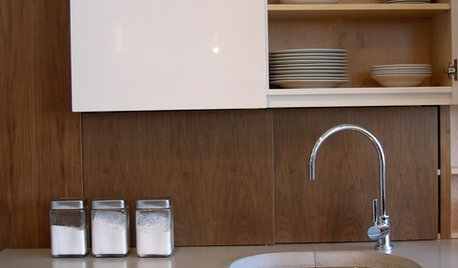








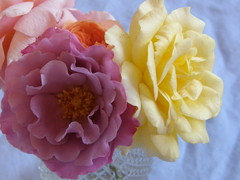

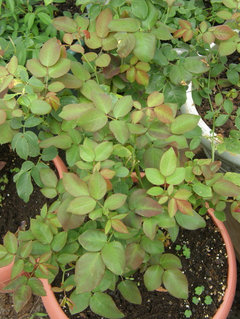
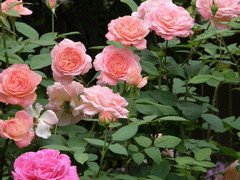



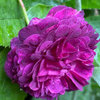
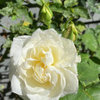
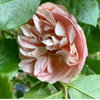
strawchicago z5Original Author